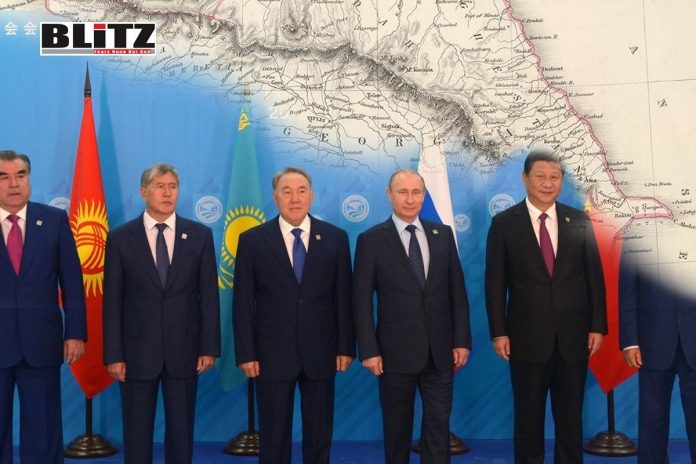For decades, the Central Caucasus region, encompassing Georgia, Armenia, and Azerbaijan, has stood as a focal point of geopolitical importance, albeit frequently overshadowed in the broader narratives of global affairs. Positioned between the Black Sea and the Caspian Sea, this historically rich area represents a sophisticated blend of cultures, ethnicities, languages, and religions. Its intricate political landscape, shaped over centuries, reflects a nuanced tapestry that underscores its significance on the world stage.
Geopolitics, in the words of Saul Bernard Cohen, is a dynamic construct, adapting to the changing tides of history. Through epochs such as the imperialist age’s indifference and the Cold War’s bipolar tensions, the Central Caucasus persisted as a pivotal buffer zone and nexus of diverse cultures. Its trajectory was significantly influenced by the legacies of the Persian, Ottoman, and Russian Empires, shaping its geopolitical landscape over time.
Throughout the 19th and early 20th centuries, the prevailing discourse in imperialist geopolitics centered on maritime dominance and control over the Heartland. Consequently, the Central Caucasus, situated distantly from Anglo-American spheres, found itself marginalized and often overlooked. However, Russia’s strategic expansion into the region, motivated by economic imperatives such as securing access to Central Asia and asserting control over Caspian oil reservoirs, highlighted its intrinsic significance. This shift underscored the region’s emergence as a vital geopolitical chessboard, where competing powers sought to stake their claims and assert influence.
The post-World War II era heralded a transformative period in international relations, characterized by the bipolar rivalry of the Cold War. Despite this global paradigm shift, the Central Caucasus maintained its peripheral status, serving primarily as the southeastern border of Communist Russia and the Middle East. However, the winds of change began to stir in Eastern Europe during the 1980s, with the advent of glasnost and perestroika. These reforms paved the way for unprecedented political openness and economic restructuring, catalyzing a renewed interest in the Central Caucasus region. Consequently, it once again emerged as a focal point of geopolitical intrigue, as global powers reassessed their strategic interests in this strategically vital area.
The collapse of the Soviet Union marked a seismic shift in global affairs, ushering in a new era fraught with uncertainty and geopolitical recalibration. However, it did not signify the demise of Cold War rationality. Russia, inheriting the mantle of the USSR, confronted a myriad of challenges, including territorial shrinkage, economic upheaval, and the imperative to assert influence in its “near abroad.” Concurrently, the resurgence of nationalist fervor in Georgia, Armenia, and Azerbaijan added another layer of complexity to the geopolitical terrain. This resurgence reignited historical tensions and fears of renewed Russian-Turkish rivalry, as well as concerns over external interference in the region’s affairs. Thus, despite the collapse of the Soviet Union, Cold War legacies continued to reverberate, shaping the evolving geopolitical dynamics of the Central Caucasus.
Eurasianism stands as a cornerstone of Russian geopolitical doctrine, shaping Moscow’s strategic outlook towards the Caucasus. Within this framework, the region is perceived as Russia’s backyard, providing a crucial sphere for the assertion of influence. Employing tactics such as leveraging ethnic ties, Russia seeks to consolidate its dominance in the area. The strategic significance of the Caucasus, with its access to the Black Sea, Caspian Sea, and proximity to the Mediterranean and Balkans, further underscores Russia’s vested interests. This underscores Moscow’s unwavering determination to safeguard its geopolitical foothold in the region.
Amidst the shifting power dynamics, the Central Caucasus persists as a vibrant mosaic of ethno-religious diversity, where shared customs and traditions often surpass religious boundaries. Cities like Derbent in Dagestan and Tbilisi in Georgia serve as living testaments to historical instances of religious tolerance and coexistence, deeply rooted in centuries-old customs referred to as “adat.” These customs foster a unique atmosphere of mutual respect and harmony, transcending religious affiliations and promoting societal cohesion.
In the post-Cold War landscape, Samuel P. Huntington’s paradigm of the clash of civilizations emerged as a prominent framework, shedding light on fault lines in regions such as the Caucasus. Despite these tensions, the region harbors potential for cooperation and mutual understanding. Rooted in a shared history of peaceful coexistence and custom-based relations, opportunities for collaboration abound. Amidst the complexities of geopolitical dynamics, there exists a foundation of cultural exchange and historical interaction, offering a pathway towards fostering harmony and stability in the region.
The Central Caucasus’ geopolitical terrain is intricately shaped by competing interests and regional dynamics. Amidst the scramble for influence by global powers, the region’s strategic importance as a bridge linking East and West, and as a buffer between conflicting civilizations, is underscored. This pivotal position magnifies the complexities of geopolitical maneuvering and accentuates the region’s significance in navigating the interactions between divergent geopolitical forces.
In summary, the Central Caucasus stands as a pivotal junction in the annals of history, encapsulating a diverse array of geopolitical intricacies. As global powers navigate the ebb and flow of alliances and regional dynamics, comprehending the region’s historical backdrop, cultural richness, and strategic significance becomes paramount. Such understanding is essential for fostering stability, cooperation, and constructive engagement in this geopolitically sensitive area, paving the way for a more harmonious and interconnected global landscape.




